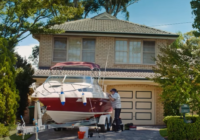Article by Niels Klarenbeek, Metstrade
Niels Klarenbeek, Director of Metstrade, breaks down the global leisure marine market and shares his thoughts on solutions and opportunities for future growth.

The global leisure marine market is navigating a dynamic landscape shaped by shifting consumer demands, economic pressures, and technological innovation. While the volume segment faces challenges, there are recent signs of a bright future. Meanwhile, the luxury and superyacht sectors are currently thriving and show no signs of slowing down.
Metstrade has always strived to be an accurate reflection of the global leisure marine market, connecting 1600+ exhibitors and 135 nationalities to explore the most important topics affecting the industry. This year, there is a key focus on three segments with unique demands to provide clarity and potential for growth. These segments are volume, luxury, and superyacht.
Volume
The volume market, involving serial produced boats, is where there has been fluctuating buyer demand due to economic factors affecting trading conditions. The global economy means that consumers suited to the volume market have less spending power than they used to. With these conditions and uncertainty keeping some buyers on the fence and delaying boat purchases, builders which are traditionally at an entry-level price point have pursued luxury buyers with more premium vessels rather than their traditional approach.
Overall, the volume market is now having more clarity in terms of trade, tariffs, and economics, and the feedback from the recent boat shows in Scandinavia and the major European consumer shows like Cannes, Genoa, and Southampton, show sparks of optimism for those in the volume segment.
Luxury
There is significant interest in the whole luxury segment – I am not just talking about superyachts and megayachts here, but high-value sailing yachts and powerboats which are filled with bespoke furnishings, integrated technology, premium equipment, and smart systems.
Consumer demand for this is strong, and more builders are moving towards a premium offering to attract buyers with larger budgets. This is being driven by factors such as lifestyle trends and increased assets, an increased number of high net worth individuals, and the adoption of new technologies fuelling interest in the market.
Superyacht
These factors also impact the superyacht industry – a segment which is thriving and where demand is outpacing production capacity and efficiency. It has been interesting to see the new innovations and developments coming out of shipyards striving to differentiate their yachts and secure orders from the growing list of ultra-high-net-worth individuals. Hydrogen technology has enabled silent, emission-free sailing and we’ve seen multiple groundbreaking launches with this new technology. The development of these complex systems requires collaboration with multiple vendors. Innovating to stay relevant and providing truly unique yachts is key for all working in and around the superyacht sector.
It’s positive to see that innovations from the superyacht industry are increasingly finding their way beyond yachting. A number of ferries in the Norwegian Fjords are now operating with hydrogen technology originally developed for superyachts. Such innovations come about through intensive collaboration between builders, suppliers, and other disciplines, and many of these conversations are sparked at Metstrade.
North American market
In North America, the number of boat builders is consolidating through key players like Brunswick and Malibu Boats which dominate the domestic market. But within the coveted North American market there is a strong appetite for European design, especially premium boats and superyachts. Clarity regarding tariffs and trade is important for both those operating in North America and those exporting significant volumes to the region. This has been one of the biggest challenges in recent times, but the opportunity to engage with owners of smaller boats is key to inspiring them to move further along their boating journey. This is why large and engaging boat shows are so important.
Areas of growth & opportunity
The major opportunities facing all leisure marine businesses are the untapped, new, and younger audiences. My own experience on the water highlights how homogeneous the current boating community is. This is why boat clubs and sharing platforms represent such a valuable opportunity: they allow new audiences to experience the beauty of boating.
But boating also needs to be made more accessible and entry to the market needs to be marketed in a way which is appealing to those unfamiliar with boating and underrepresented in the current market. This includes maintaining sailing clubs and schools to keep the skill of sailing alive and thriving across generations.
Understanding the audience and tailoring the product to fit market nuances is something which some builders are doing very successfully. For example, builders seeking to enter the US market have been tailoring their boats based on the buyer preferences of the market, such as providing outboard power options for the US market.
Consumers today have a wide range of interests and busy personal lives. With so much competing for their time and attention, boating can sometimes take a back seat. But boatbuilders are finding new concepts that go beyond just simply selling yachts, offering convenience and lifestyle as part of the package. For example, full-service management packages, digital innovations and warranty and maintenance services all contribute to a complete solution. These concepts also create boating communities that act like exclusive clubs, bringing together like-minded owners with similar lifestyles. Buying a yacht becomes more than just a purchase, but an entry into a wealthy, influential network.
The pandemic era created a boom, with large numbers discovering recreational boating. It was clear, however, that this surge was not sustainable. As restrictions eased, people returned to more traditional holidays. Now, with tourist destinations around the world becoming overcrowded, I believe many will be drawn back to boating and that the volume market will see renewed growth.
Collaboration is critical
Collaboration is, in my opinion, the key to understanding the global leisure marine market. Learning from fellow colleagues from all corners of the world will help us all to identify growth potential. For visitors to Metstrade, every important innovation and product is available to provide the critical differentiation for new boats and projects, whilst exhibitors have access to relevant buyers for new routes of collaboration. It is the place to understand market nuances and how to adapt for future growth, bringing together these developments to create a positive outlook for the industry.
Despite ongoing challenges, the sense of optimism pulls through, and the beauty of boating continues to resonate, representing significant potential for the industry.
Visiting Metstrade has always been essential for gaining a clear view of the market, but this year it is even more so. It will be the common thread running through business conversations in the stands and aisles, as well as throughout the official content program. I would particularly like to highlight the Metstrade Stage in Hall 13, the new North America Stage in Hall 12, and the new Superyacht Stage in Hall 8 — all of which visitors can walk into freely, without any pre-registration, to gain insight into key trends and opportunities.
With so many chances to connect, learn, and be inspired across different halls and stages, it truly pays to spend more than one day at the show. Only then can you capture the full picture of what is shaping the industry right now and what lies ahead.
Learn more about Metstrade 2025 and book a free ticket: www.metstrade.com








